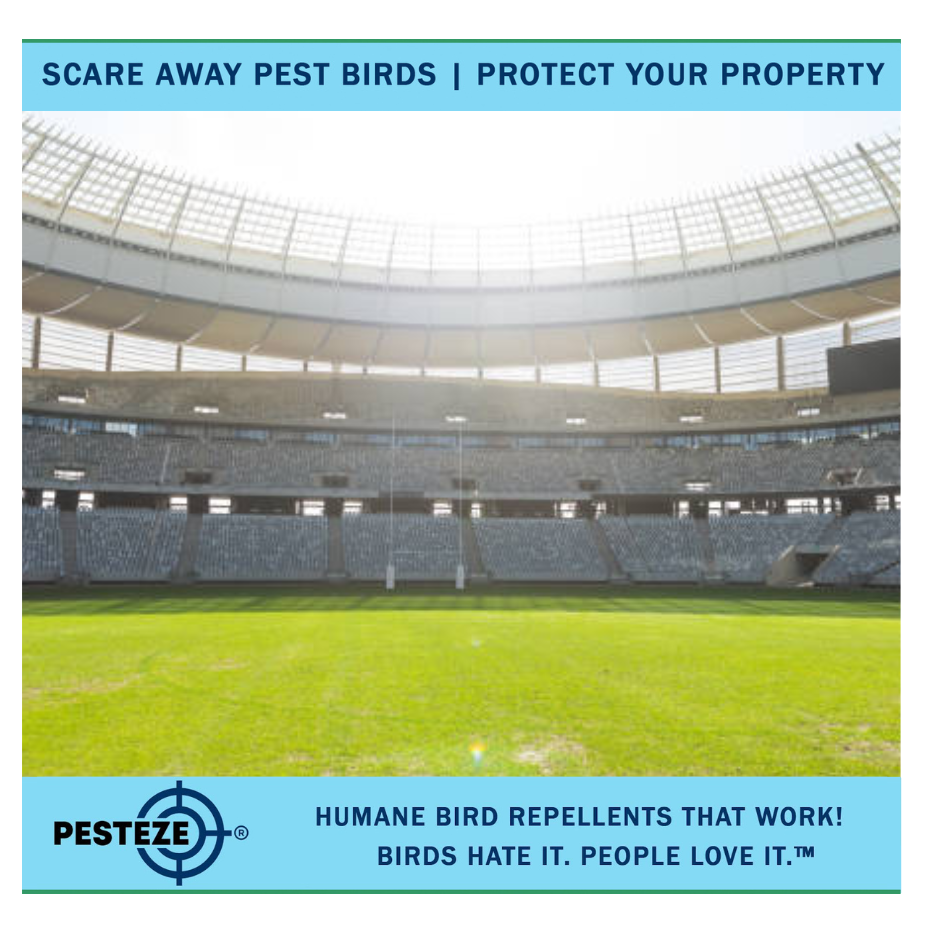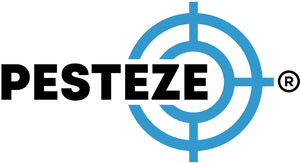BIRD DETERRENTS FOR STADIUMS AND ARENAS: KEEP YOUR VENUE BIRD-FREE!

BIRD DETERRENTS FOR STADIUMS AND ARENAS: KEEP YOUR VENUE BIRD-FREE!
SUMMARY
Large open spaces like stadiums and arenas are prime spots for birds to gather. Discover effective strategies to deter birds from nesting and roosting in these high-traffic venues while maintaining a clean, safe environment for visitors.
FEATURES
- Bird Netting: Cover large open areas with netting to block access.
- Laser Deterrents: Use laser devices to disrupt bird activity without harm.
- Bird Spikes: Install spikes on ledges and beams to prevent perching.
- Sound Deterrents: Utilize ultrasonic or distress call systems to scare birds away.
- Reflective Objects: Use mirrors or reflective tape to create visual disturbances.
- Maintenance and Cleanliness: Regular cleaning of food and debris to reduce attraction.
GUIDE DESCRIPTION
Birds in stadiums and arenas can cause a variety of problems, from droppings on seats and structures to potential safety hazards for both staff and spectators. Implementing effective bird deterrence strategies in these large venues is essential to maintain a clean and safe environment while keeping birds away.
One of the most effective methods for preventing birds from accessing key areas is through the use of bird netting. By installing netting over large open areas, such as the upper parts of the stadium or over rafters, you can create a physical barrier that blocks birds from flying into the venue. The netting is discreet and doesn’t interfere with the view or aesthetics of the arena, making it a popular choice for large-scale deterrence.
In addition to netting, laser deterrents offer a high-tech solution for bird control. Birds are highly sensitive to light, and using laser systems to project beams across the stadium or arena can deter birds without causing harm. These devices can be automated to operate during peak bird activity hours, effectively preventing birds from roosting or nesting in the venue.
Bird spikes are another practical solution for preventing birds from perching on ledges, beams, or other flat surfaces. These spikes are designed to make it uncomfortable for birds to land while being invisible from a distance. Placing spikes in hard-to-reach areas of the stadium ensures birds cannot settle, without affecting the visual appeal of the venue.
For a more sensory approach, sound deterrents such as ultrasonic devices or bird distress call systems can be highly effective. These systems emit high-pitched sounds or play recordings of birds in distress, both of which are unpleasant to birds but go unnoticed by humans. By creating an environment that feels unsafe or uncomfortable for birds, you can effectively deter them from gathering in the area.
Reflective objects, such as mirrors or reflective tape, can also be used to create visual disturbances that scare birds away. Birds are naturally deterred by bright, flashing light, so placing reflective items in areas where birds frequently gather—like on the roofs or around seating areas—can reduce their presence in the stadium.
Finally, maintaining a high level of cleanliness is crucial for keeping birds away. Birds are often attracted to food and debris left behind by spectators, so implementing regular cleaning protocols is essential. Clearing food scraps, trash, and bird droppings reduces the appeal of the stadium for birds, making it less likely they will return.
By utilizing a combination of bird netting, laser deterrents, bird spikes, sound systems, reflective objects, and regular maintenance, you can successfully keep birds from causing problems in stadiums and arenas. These strategies will ensure a clean, safe, and bird-free environment for everyone to enjoy.
- Tags: Bird Control Guide
- Maanas Mehta


Comments 0